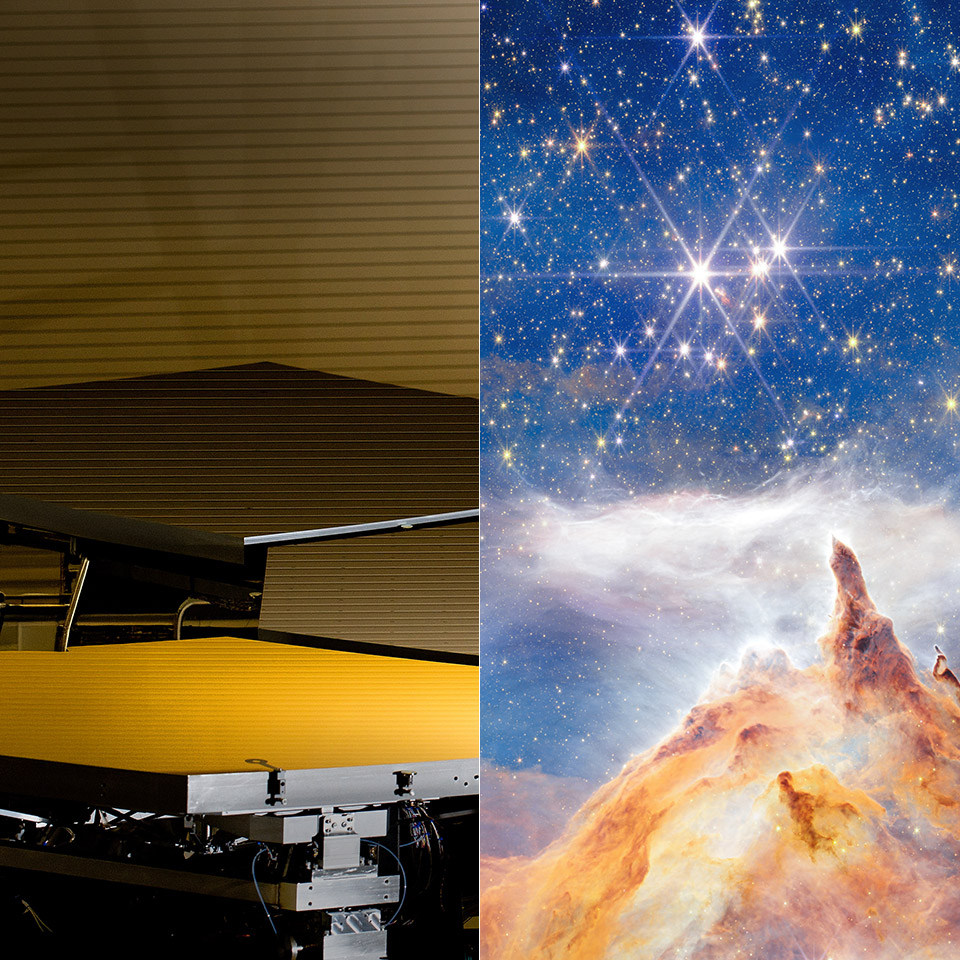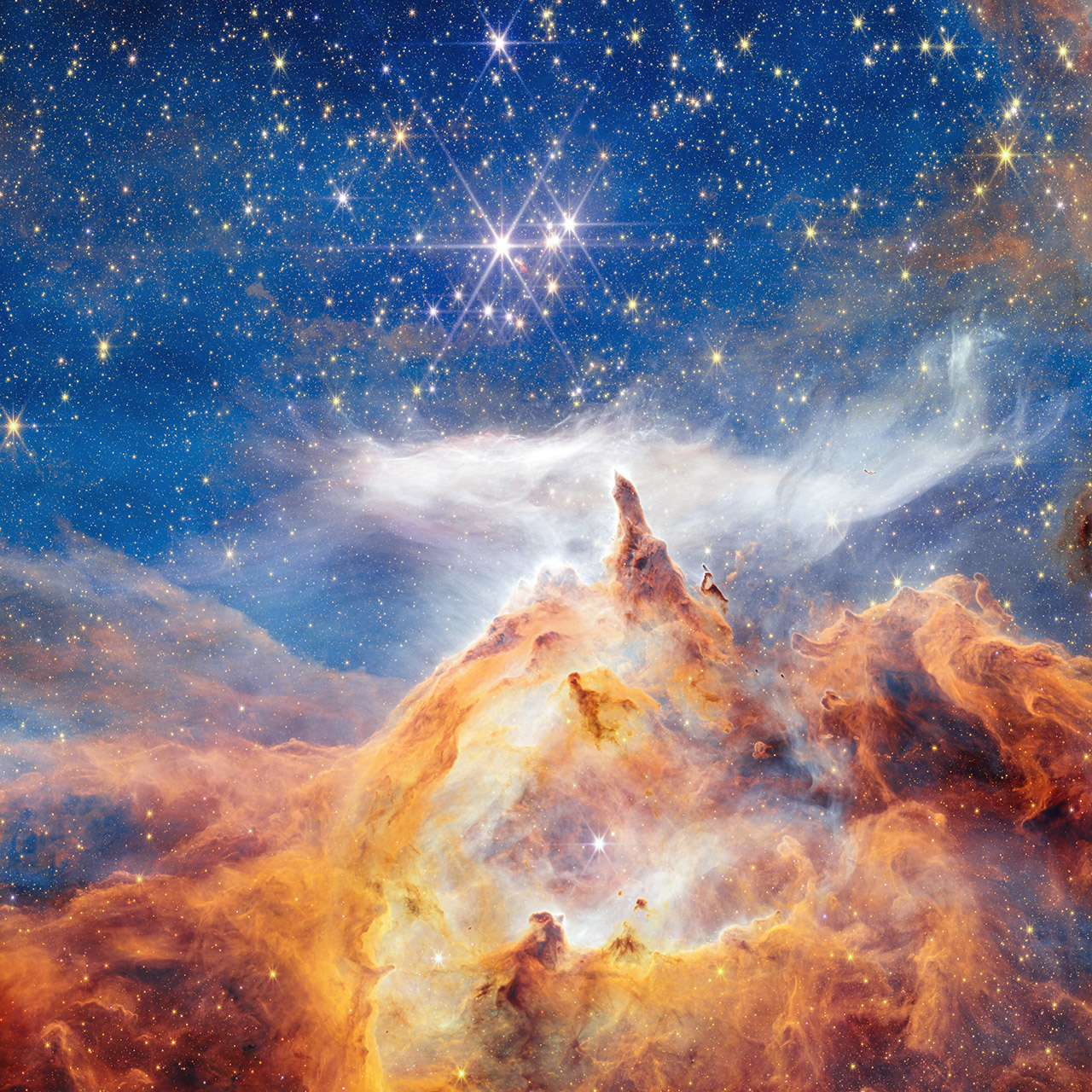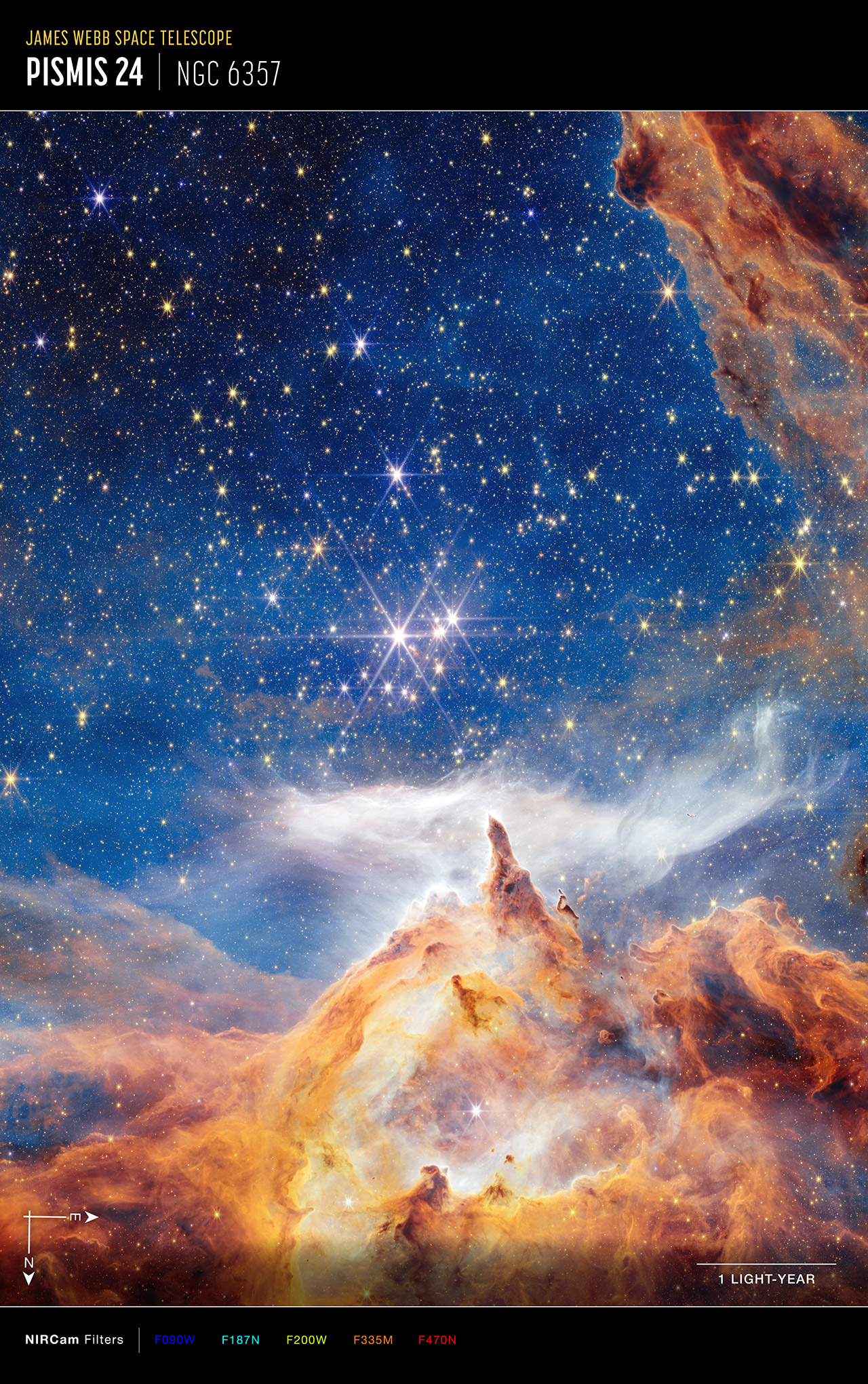Webb’s Stunning View of Pismis 24 Reveals Cosmic Nursery Within the Lobster Nebula


A star cluster shines in the vastness of space, captured in stunning detail by the James Webb Space Telescope. Pismis 24 is a stellar nursery in the Lobster Nebula in Scorpius, 5,500 light-years away. This NIRCam image shows a jagged landscape created by the raw power of newborn stars.
Pismis 24 has a thriving stellar nursery, one of the closest places where big stars are born. Pismis 24-1 was once thought to be a single giant star, but is now found to be a pair with masses 74 and 66 times that of the Sun. Their radiation and winds are carving a hole in the surrounding nebula, creating those spires that stretch for light years. The tallest of these spires is 5.4 light-years high, bigger than our solar system, with the tip alone wide enough to fit over 200 orbits of Neptune.

LEGO Icons Shuttle Carrier Aircraft Building Set for Adults – Spaceship & Airplane Model Kit for Adults,…
- 2 AVIATION LEGENDS, 1 BUILD – Recreate the iconic Boeing 747 and NASA Space Shuttle Enterprise with the LEGO Icons Shuttle Carrier Aircraft (10360)…
- DEPLOY LANDING GEAR – Turn the dial to extend the massive 18-wheel landing system on your airplane model, just like real flight operations
- AUTHENTIC FEATURES & DETAILS – Remove the tail cone, engines, and landing gear from the NASA shuttle and stow them in the cargo bay during flight

Webb’s infrared vision shows thousands of stars in incredible detail. The heavyweights are the largest and brightest stars, with six-point diffraction spikes. Smaller stars, hundreds to thousands, are white, yellow and red, their colors changing due to the dust around them. Tens of thousands of Milky Way stars are in the background, giving depth to this cosmic scene. Wispy veils of gas and dust hover around the peaks, lit by starlight, while ionized gas streamers run down the nebula’s ridges.

Cyan is hot, ionized hydrogen gas, energized by the massive stars. Orange is dust molecules, like smoke, scattered throughout the scene. Red is cooler, denser molecular hydrogen, with darker shades showing the densest regions where light can’t escape. Black is gas so thick it blocks emission entirely. These colors are a nebula being reshaped, with new stars forming in the compressed spires under the pressure of their bigger siblings.
Pismis 24’s hot, young giants—some nearly 8 times the Sun’s temperature—are a rare laboratory. These stars in their infancy are sculpting their surroundings with raw power, a cycle of destruction and creation. The nebula goes far beyond the frame, but only fragments are visible at the edges of the image.
Webb’s Stunning View of Pismis 24 Reveals Cosmic Nursery Within the Lobster Nebula
#Webbs #Stunning #View #Pismis #Reveals #Cosmic #Nursery #Lobster #Nebula







